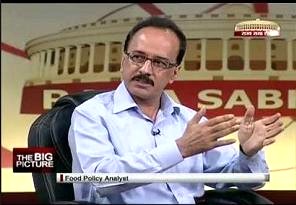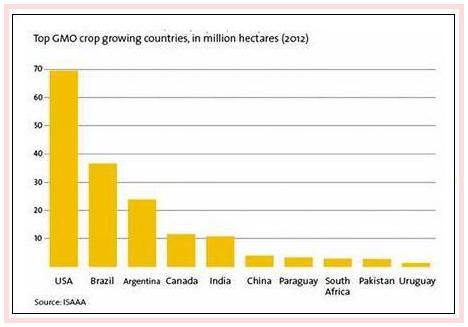Last week, the U.S. Senate approved HR 933, a short term funding measure designed to avoid a March 27 government shutdown. Hidden within HR 933 is section 735, the “Farmer Assurance Provision”, which gives the USDA the power to allow the planting, harvest and sale of genetically engineered crops, even if a court rules that they were not properly approved. Laura Sesana writes in the Washington Times:
“Short of a Presidential veto, the provision is a certain victory for genetically engineered foods.
“In the past, if a court ruled that a genetically engineered crop was not properly approved by USDA and could pose a risk to health or the environment, the court could halt its planting and sale, pending a review of the approval. This so-called “biotech rider” effectively strips courts of this power and allows the production and commercialization of the crop during the appeals process.
“The provision was slipped in anonymously while the resolution was in the Senate Appropriations Committee, chaired by Senator Barbara Mikulski (D-MD). The rider should have been brought in front of the Agricultural or Judiciary Committees, but was not. Senator John Tester (D-MT) proposed an amendment to strip section 735 from the bill, but the amendment never came up for a vote. According to the Center for Food Safety, there were no hearings on this provision and most Democrats did not know it was part of the larger bill.
“Many are critical of the way the provision made it into the budget resolution. Andrew Kimbrell, Executive Director of the Center for Food Safety said last week, “In this hidden backroom deal, Senator Mikulski turned her back on consumer, environmental and farmer protection in favor of corporate welfare for biotech companies such as Monsanto . . .”
Hundreds of national and local organizations have come out in opposition of the bill, including the National Farmers Union, Food Democracy Now, American Civil Liberties Union, Sierra Club, Environmental Working Group, Stonyfield Farm, Nature’s Path, Consumers Union, National Sustainable Agriculture Coalition, and Public Citizen. Laura continues:
“Many view the passing of this provision as the result of effective lobbying by Monsanto and Political Action Groups (PACs) that support genetically engineered crops. According to MapLight, since January 1, 2009, PACs that support genetically engineered crops have donated $7.5 million to the campaigns of current members of Congress and $372,000 to members of the Senate Appropriations Committee.
Companies like Syngenta Corp, Cargill, Archer Daniels Midland, Scotts Miracle-Gro, Minn-Dak Farmers Coop, Southern Minnesota Beet Sugar Coop, National Cotton Council, and American Farm Bureau regularly contribute to Congressional campaigns. Monsanto alone, has given $540,000 and American Crystal Sugar, by far the largest donor, has contributed $3.3 million since the beginning of 2009.“
The full text of HR 933 is available here, the provision is on p.78, section 735. The petition asking President Obama to veto 735 is available here.
More on Monsanto, GM Watch, March 15th http://www.gmwatch.org/index.php?option=com_content&view=article&id=14702:how-monsanto-outfoxed-the-obama-administration
Tags: 'biotech rider', American Crystal Sugar, “Farmer Assurance Provision”, Center for Food Safety, Laura Sesana, Monsanto, U.S. Senate, USA, Washington Times
 Quartz updates us: reporting that a study published on Oct. 6 in the journal Science found that a significant amount of the world’s honey contains traces of neonicotinoids,, a class of commonly used pesticides, at levels strong enough to cause brain damage in bees – but not (yet?). human beings.The chemicals are meant to attack the nervous systems of pests and keep them from eating crops.
Quartz updates us: reporting that a study published on Oct. 6 in the journal Science found that a significant amount of the world’s honey contains traces of neonicotinoids,, a class of commonly used pesticides, at levels strong enough to cause brain damage in bees – but not (yet?). human beings.The chemicals are meant to attack the nervous systems of pests and keep them from eating crops.











Recent Comments